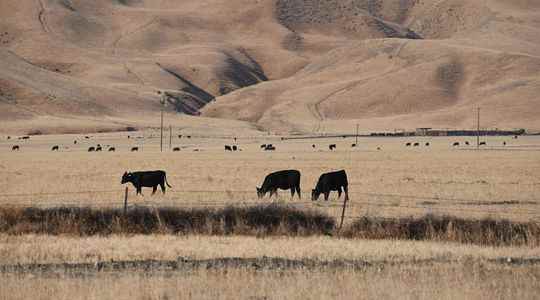It all started with one observation: heat waves are increasing all over the world, threatening the sustainability of agricultural crops. As a result, the risk of an explosion in food prices due to global warming has never been greater. The American magazine devoted to the environment Grist called this phenomenon “heatflation” – contraction of warming and inflation in English. If the phenomenon is still little known, its consequences are already being felt, in particular on food prices. “According to the UN, these jumped from 70% since mid-2020″, reminds L’Express the former reporter at the White House Bob Keefe, now director of the organization Environmental Entrepreneurs, and author of the book Climatenomics. And while the inflationary surge is today largely attributed to cyclical factors such as the post-covid recovery or the war in Ukraine, it is clear that global warming has something to do with it.
In the columns of The Hill, David A. Super, professor of economics and law at Georgetown, in the United States, writes: “If we want to control inflation, we must tackle climate change now”. But “given that global warming affects prices in different ways across sectors, its impact is easy to miss,” he acknowledges. How does global warming affect prices? How does it affect our short and long term bills? Decryption.
Major economic issue
For Bob Keefe, “part of the explanation is supply. When you lose crops due to extreme temperatures, livestock die due to drought, the food bill increases accordingly”. At a time when record heat waves are raging, many countries are seeing their agricultural harvests affected. And no need to go to the other side of the world to see the effects. According to EU forecasts, yields of maize, sunflower and soybean are expected to fall by around 8-9% this year. Cereal yields overall are down about 2% from the past five-year average, although a handful of crops such as beets and potatoes are doing well. Beyond human consumption, these crops are used to feed livestock. In China, early season losses have already sent prices for pork, the staple meat in that country, soaring.
For the economist Julien Pillot, teacher-researcher at Inseec, climate change plays on several levers that fuel inflation: “This impacts not only agricultural yields – since the same land produces less than before in quantity and quality – but also industrial production and worker productivity“. Very concretely, if you produce less and there is the same demand at the exit, this leads to an increase in prices”, he continues.
Emerging countries on the front line
This causal link between global warming and inflation is all the more marked during certain periods and in certain places. Indeed, still according to the report of the European Central Bank, emerging countries, for which the agricultural sector often accounts for a key share of domestic GDP, are bearing the full brunt of temperature rises. “In emerging economies that are more dependent on domestic agricultural production, food prices are more affected by climatic shocks”, underlines the note, based on a 2018 study. Latest example: India, in the grip of a severe drought since March which has led to a drop in the wheat harvest of at least 5% compared to the previous year, and which has seen its prices of food increase by 8.3% over one year.
Another lesson from the report: the effects of global warming on prices are felt more in countries with historically high temperature levels. “Beyond the 30°C mark, temperature peaks are highly damaging to agricultural yields and induce a significant rise in food prices”, summarize Schlenker and Roberts, cited in the report. Finally, the extent of the impacts varies according to the seasons. While temperature rises in winter or spring have only a fairly weak effect on prices for the time being, very hot summers have a more marked and lasting impact on the increase in food prices.
And food is far from the only sphere concerned. The energy and housing sectors are also hit hard. “In the United States, home insurance has increased by 40% in a decade because insurers have lost billions of dollars linked to climatic catastrophes”, indicates the author of Climatenomics. In short, although it is still largely ignored as an inflationary factor, global warming has undeniable structural effects on the prices of many goods, which deserve close scrutiny.
